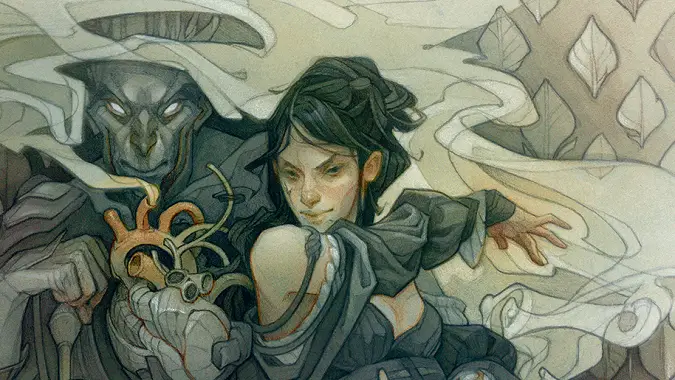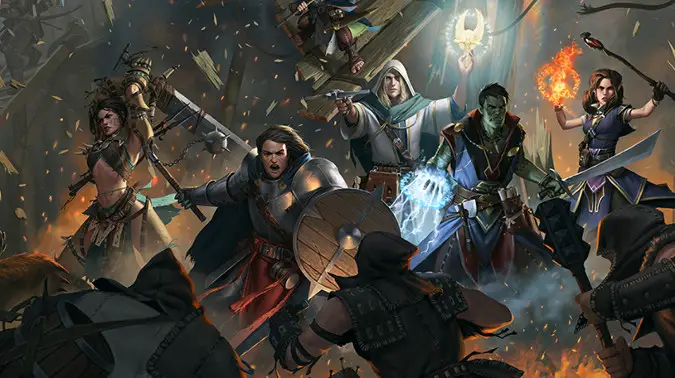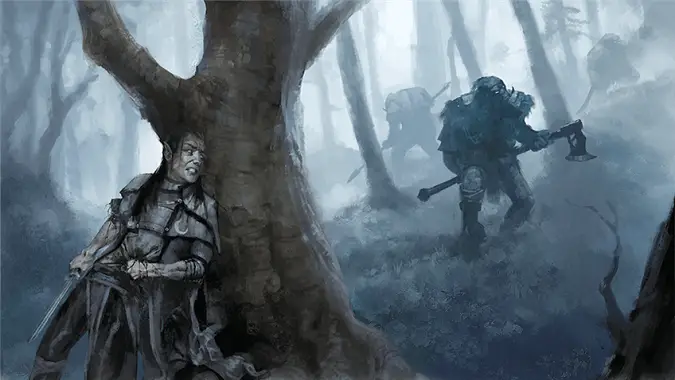Tasha’s Cauldron of Everything brings some neat new tools for DMs as well

Tasha’s Cauldron of Everything arrived this week and like the title promises it brings a whole new book of “everything” to the D&D player. Of course, we’re always excited by the prospect of new subclasses, and it was good to see Wizards of the Coast fulfill their pledge to diversity by giving us new optional rules for character creation. Not all of the “everything” is for players, though, so let’s take a look at what the Dungeon Master gains from TCoE.
In my opinion, the most important tool that TCoE provides is the concept of Session Zero. In my discussion of Rime of the Frostmaiden I pointed out how some of the elements in that adventure could provoke problematic reactions in players, and it was imperative for the DM to plan and discuss in advance with the players their potential concerns. The rules of Session Zero codifies this practice, as well as expanding the concept to include discussion on the characters’ relationships to one another as well as more technical aspects such as House Rules or how experience points will be rewarded. It’s a great idea that helps sets the expectations for both the DM and the players, and makes it easier for everyone involved to have a great time.

Group Patrons and Sidekicks allow you to annoy your party, hands-on
Speaking of the characters’ relationships, TCoE dedicates an entire chapter to rules and examples of Group Patrons. An expansion on the old school concept of the local magister hiring the adventurers to clear out a nearby Kobold-infested dungeon, the tools help flesh out the adventures by providing ideas that can change the look and feel of an entire campaign. Instead of a prince or mayor hiring the adventurers, perhaps they’re put in contact with a criminal syndicate whose motives are more profit-oriented than the local government’s. Or perhaps there’s an aristocrat who wants to claim the territory as her own to expand her influence at the expense of the rulers, leading to a conflict further down the road that involves the adventurers.
Group Patrons open up fertile ground for the DM’s imagination when designing a larger campaign, but I will say I’m not so certain it’s necessary if you’re using the published hardcover adventures. That said, if you’re adapting one, adding a Group Patron will help you stamp your own imprint on it.
The one thing I don’t like is the inclusion of an Ancient Being option, for two reasons. One, at that point you’re starting to tread on Warlock territory. More importantly, though, it seems to provide too much power for the adventurers to fall back upon. I would recommend only considering the Ancient Being if it’s for higher level adventurers, or if you have its influence and importance to the entire campaign fully mapped out.
TCoE doesn’t just provide options for those who rank above the player characters, but provide detailed instructions on Sidekicks that may join your party for a time. Divided into three generic categories — Expert, Warrior, and Spellcaster — Sidekicks are useful for expanding the party without overpowering it, while also giving the players an opportunity to interact and roleplay nonstandard character types. While the traditional view of a Sidekick is someone like Jaskier accompanying Geralt in the Valley of Plenty, it can just as easily be a Tabaxi you’ve rescued helping you reach their home. While I wouldn’t recommend Sidekicks as a permanent feature of the party, weaving them in and out over the course of the campaign will give it more depth.

You may want to save the environment, but the environment wants to kill you
TCoE spends a good number of pages detailing environmental hazards your players can end up dealing with, from the macabre to the life-threatening. Divided thematically among Supernatural Regions, Magical Phenomena, and Natural Hazards, these are designed to add engaging atmosphere to the adventure. The official adventures like Curse of Strahd and Rime of the Frostmaiden usually include their own sections covering these environmental effects, so those running homebrew campaigns will benefit most from the possibilities here. That said, while there’s a lot of random tables in this section, don’t feel wedded to the roll of the dice; if the result is that your party ends up being charmed or at the bottom of a ravine or in some other way inconvenienced that doesn’t mesh with the adventure, roll again or choose an effect you feel best complements your goals.
While not an environment effect per se, TCoE concludes with an entire section on Puzzles, providing both examples — ranked by difficulty — and player handouts. Puzzles are great because you can tailor them to the players or the characters; while I would always give the players first crack at solving it, if it proves too difficult an insight roll is a nice pathway to providing a clue that helps them solve it. Unlike the other tools in the book, however, I would not use these Puzzles as-is. Even if your players aren’t secretly reading TCoE to gain insight into what you’re planning, there’s a strong likelihood that players will encounter the same puzzles again and again over their playing careers. Many of the Puzzles provide customization options — start from there, and use those options to turn those Puzzles into something of your own.
Like its predecessor Xanathar’s Guide to Everything, TCoE is another invaluable addition to the players’ and DM’s gaming shelves. For the DM, the inspiration from the new rules and concepts will help provide a more immersive and enjoyable experience for your players while also supporting the decisions you make with an official published blessing. All the laughs you’ll get from Tasha’s commentary are simply a bonus.
Please consider supporting our Patreon!
Join the Discussion
Blizzard Watch is a safe space for all readers. By leaving comments on this site you agree to follow our commenting and community guidelines.
 @Kalcheus
@Kalcheus



